
ROBERT STEELE: A large company paid me to write this in 2004, ostensibly as a white paper to be delivered to then newly-appointed DNI John Negoponte. In fairness to that company, even if they were honest on this point and not just buying my playbook, the prime contract they won with the Open Source Center (OSC) then being managed by Doug Naquin was designed to fail — OSE has never understood OSINT as HUMINT, and is further handicapped by the CIA's Clandestine Service forbidding them from engaging Subject Matter Experts (SME) outside their narrow online surfing and translation lanes. Together with my white paper faxed to then DCI John Deutch, and my memorandum to Vice President Joe Biden, this remains one of my most useful documents for actually creating a national Open Source Agency.
DOC (43 Pages): White Paper Draft 5.5 dtd 7 Sanitized
Full Text with Graphics Below the Fold
Global Information Monitoring & Related Decision Support
Executive Summary for the Director of National Intelligence
N-X understands and applauds the initiatives being taken by the the varied elements of the government responsive to DNI guidance. We believe that we can be helpful to the DNI, and to the dramatic enhancement of what can be known and shared both domestically and internationally.
N-X has spent over a year assembling a team of world-class players able to address the operational aspects of open source intelligence (OSINT) decision support, responding largely to the requirement established by the Undersecretary of Defense for Intelligence (USDI) in January 2004, for universal coverage, 24/7, in all languages, down to the tribal and neighborhood levels of granularity. Our team is capable of meeting that objective, and making sense of the resulting data.
Our effort has the specific advantage of being built on the multinational OSINT training and concept development carried out by the Atlantic Command under General William Kernan, USA, who authorized and issue the NATO Open Source Intelligence Handbook, the NATO Open Source Intelligence Reader, and the NATO guide to Intelligence Exploitation of the Internet.
It is important to state early on that we see OSINT is a complement to the all-source endeavor, which will often result in relieving the senior intelligence officers at every organization and command of those burdensome requirements (e.g. strategic communication or logistics support requirements, or indigenous biographics and tribal studies) that can be addressed by open sources. However, since 90% of the OSINT we need is controlled by those who do not wish to be associated with intelligence, there is an important role to be played by diplomatic and private sector parties.
While we respect and appreciate the internal OSINT advocacy and initiatives already present within the U.S. Intelligence Community, we believe that the following four points, and the six suggested DNI initiatives, will considerably enhance the capability of the DNI across the board.
- OSINT can be the basis and context for more efficient allocation of classified resources. OSINT should be the first resort for meeting the needs of consumers at the lowest possible cost in the shortest possible time; and it should also be the foundation for effective classified collection management, to include robust spotting, assessment, & targeting services.
- OSINT can be the basis and context for evaluating the return on investment and the opportunity cost in terms of time, risk, and morality, of each of the classified disciplines in relation to specific topics and targets. By managing OSINT as balancing factor, the DNI will be able to make better decisions abouit the reallocation of classified resources.
- OSINT is a means of substantially enhancing Public Diplomacy, Strategic Communication, and Homeland Security. If we can achieve Global Coverage, 24/7, in all languages, this can help make our out-going messages to the international community more effective, at the same time that it internationalizes US education and US public perceptions about threats and long-term issues affecting national security and national prosperity.
- OSINT, and the Open Source Information System – External (OSIS-X) that we have conceptualized, can address the immediate priority of secure information sharing with state and local governments and with non-governmental organizations, while providing your Chief Information Officer (CIO) with a vehicle for securely harvesting open sources with zero risk..
On this basis, with the remainder of this white paper intended for staff, we recommend to the DNI the following six initiatives:
- A Department of State Office for Information Sharing Treaties and Agreements. This small office of perhaps ten individuals, led by accredited diplomats, would negotiate information sharing treaties with nations, and information sharing agreements with organizations. We can extend data sharing standards to all participants.
- Encourage the managers of Intelink and the existing Open Source Information System (OSIS), and of the National Geospatial Agency, to help us migrate the excellent meta-tagging and other protocols including geospatial tagging, to our commercial implementation open to all accreditted contributors including state and local authorities and non-governmental organizations. We will commit to feeding back to the high side, at no cost, all OSINT that enters our implementation. We are already doing OSINT that is pre-tagged to Intelink standards, such that the Special Operations Command can migrate our OSINT in HTML directly up to the NIPR and SIPR networks with a “one button” acceptance command.
- Encourage the White House to participate in a one-day summit we will co-sponsor with the DNI in January 2006, to discuss expansion of the extraordinary Earth Science information sharing initiative, to include the sharing of information about disease, crime, poverty, and other non-traditional threats to our national security and prosperity.
- Encourage the General Services Administration (Office of Intergovernmental Solutions) to sponsor a summit and an on-going Wiki web site on the four “opens” that will energize information sharing in the future:
- Open Source Software
- Open Source Information
- Open (Electromagnetic) Spectrum
- Open Hyperdocument System (OHS)
- Ask the Secretary of Commerce to issue an anti-trust waiver for a private sector OSINT skunkworks that will fully integrate and test all available open sources, softwares, and services. We are prepared to take the lead on our own, but seek your approval to broaden this initiative with the intent of doing for OSINT what the Microelectronics and Computer Technology Corporation (MCC) initative sought to do for artificial intelligence under Admiral Inman. This skunkworks will accelerate the development of open common standards for information sharing that will be truly world-wide, with the added advantage of developing commercial alternatives for the sharing of secret information across national, cultural, and government to non-government boundaries on a by-name, by-paragraph basis.
- Recommend to Congress that the new Open Source organization be given an independent status with its own Special Committee comprised of two members from Appropriations, Armed Services, Commerce, Foreign Affairs, Government Operations, Homeland Security, Intelligence, and Judiciary, and simultaneously recommend that each Congressional committee establish a sub-committee on information sharing and intelligence. This will set the stage for a dramatic broadening of your influence across all aspects of information operations, secret and open, while affording the open source element the public perception of independence it needs to succeed.
We acknowledge your leadership and seek your support.
For N-X Communications, Government Services, Inc. (N-X GSI)
Executive Summary
The end of the Cold War and the emergence of terrorism, radicalized religion, the proliferation and commoditization of weapons of mass destruction, and the increased informational and economic power of Arabia, Brazil, China, India, Indonesia, Iran, Russia, and Venezuela, among others, has brought Information Operations to the forefront of the unified national security strategy. The Administration and Congress both recognize that Strategic Communication, Public Diplomacy, and inter-agency information-sharing and collaboration must be core competencies within a transformed national security arena. Robust inter-agency information-sharing and collaboration practices will be most effective if there is a common understanding of the real world based on global foreign information acquisition and analysis. With this White Paper N-X communications and its extraordinary partners offer a campaign plan for meeting the requirement established by the Undersecretary of Defense for Intelligence (USDI) in January 2004: universal coverage, 24/7, in all languages, down to the tribal and neighborhood levels of granularity. This capability addresses the needs of the Department of State, which wishes to be a consumer of open source information rather than a collector; of all DoD elements, of the Department of Homeland Security and its state and local constituencies, and of all other elements of the U.S. Government (USG)..
N-X, the only defense contractor to be included in the WIRED 40, masters of innovation and technology with strategic vision, plans to partner with three other U.S. companies listed in the WIRED 40 (IBM, CISCO, Google), and with the top open source information companies in the world—including the leading provider of foreign geospatial and foreign information acqusition services—as well as world-class providers of man and machine foreign language translation services as well as multi-lingual operational field support services. We are integrating these global scalable capabilities with our existing analytic and technical services, and adding the extraordinary statistical analysis and pattern recogntion capabilties—including early warning from information that should be present but is not—of IcoSystem and Texas A&M University. PRNEWSWIRE completes our team and is our partner in evaluating key communicator biases and content trends, and in creating direct email, facsimile, and voice paths to influentials in every country and every domain. We deliver the message “by name.” We will integrate a global 911 service that will allow any individual to call in and receive both interactive secure real-time translation and subject-matter expert support, as well as secure locationally-aware cultural intelligence, using Tacticomps and other commercial hand-helds, as well as a 119 service for “bottom-up” dots from citizens to the Department of Homeland Security (DHS) and to the elements of the U.S. Intelligence Community..
N-X, with leading roles in support of the Global War on Terror (GWOT) and the Homeland Security (HS), believes that Open Source Intelligence should be the linch pin for a new out-sourced approach to global information acquisition and exploitation that also provides a basis for a “Manhattan Project” approach to global information sharing and sense-making. This White Paper presents our unique scalable approach to the twin challenge of global information monitoring and related decision support as well as multnational, multiagency, multidisciplinary multidomain information sharing (M4 IS). N-X is pioneering the concept of burden-sharing in two important ways beneficial to our clients’ mission: we are increasing the amount of information that is available by obtaining free access to United Nations (UN) and Non-Governmental Organizations (NGO) and academic databases world-wide, and by implementing a global clearinghouse concept, an Open Source Information System (OSIS-X), that permits other governments and corporations to share the cost of acquiring information not now affordable by the USG. Our team strengths are shown on the next page (Figure 1). We anticipate that we will be able to earmark several hundred million dollars to build a “virtual back office” and hub for all USG OSINT, that can be subsequently expanded to the North Atlantic Treaty Organization (NATO), UN agencies, and thence to a wide variety of regional coalition partners and organizations. We wish to do this is careful coordinatioin with the DNI, and with all relevant elements of the USG.
REDACTED
Figure 1: Team N-X for Global Information Grid Challenges
Our foreign language translation partners are shown separately in Annex A. We have structured our team along six lines—clients may hire any of the team members as “prime” contractor.
- By promoting and perhaps even subsizing global adoption of IBM’s DB2 with OmniFind, we will substantially reduce the cost and increase the speed of accessing globally distributed private databases.
- By integrating CISCO’s Application Oriented Network (AON) with Personal Digital Assistant (PDA) and disk level security features, and Google Enterprise, we resolve all of the latter’s security issues, while retaining its superb capability. We can also use Google to see what’s popular at the tribal level. Licensing the Googleplex reduces overall network computing costs by two thirds.
- Our contracting of FedEx (including globally-distributed Kinko’s capable of digitizing daily), and Amazon, which can apply its technologies to foreign language books and documents, to include understanding of what is popular at the provincial level and across ethnic groups, is innovation at its best.
- Our open source intelliigence (OSINT), decision-support (DM), machine translation, and data mining and statistical analysis pioneers, and our adoption of INTER-4! Tacticomps as our generic hand-held device for both inputing and receiving OSINT, are the guts of our global strategic objective of accomplishing the defense vision of universal access, 24/7, in all languages, at sub-state levels of granularity (provincial, tribal, neighborhood), along with tactical access from anywhere, to global information and imagery.
- Geospatial depictions and fully integrated 1:50,000 geospatial data points are the foundation for our scalable and flexible data extraction, dissemination, and visualization. We leverage all available vendors.
- PRNEWSWIRE, with our help, will be able to reach influentials everywhere “by name,” at the sub-state level (provincial, tribal, neighborhood). Public diplomacy and strategic communications will be enhanced.
Our Executive Summary is completed with two depictions, one on this page (Figure 2) and one on the next page (Figure 3) of our ten-year plan for creating a global open source information system, and eventually a global all-source information system, that fully exploits locationally-aware devices including Radio Frequency Identification (RFID) tags, and our plan, already discussed with the United Nations, Scotland Yard, and selected others, to change the global information paradigm by making possible universal access to shared information at three levels: public, government-only, and restricted. Access can also be controlled “by name.” Finally, page 5 is an implementation schedule for the first 100 days, and for the two-year plan for elements to be funded under contract.
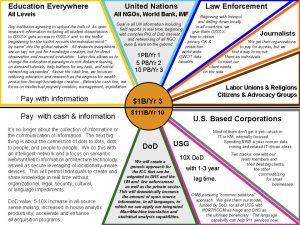
Figure 2: Strategic Depiction of New Approach to Global Information Burden-Sharing
NOTE: The dollar figures above are projected international government and corporate expenditures on OSINT, not US Government investment figures. We believe that OSINT is ideally suited to “burden sharing,” and that leadership from the DNI and the new director of the open source program can substantially increase the amount of information available to the USG at no cost to the USG, by incentivizing multinational information-sharing, and by providing a distributed but architecturally coherent means for many governments and many corporations to share the cost of making information available for secure and selective sharing, will answer USDI’s requirement.
The recent decision of the United Nations to work toward a global UN information-sharing network open to our exploitation in return for access to OSIS-X, is one of our most important opportunities. If we can add the World Bank as an early adopter, the entire USG will benefit. We fully expect global multi-national corporations to co-invest and share the cost and the collection burdens for creating the Open Source Information System – External (OSIS-X).
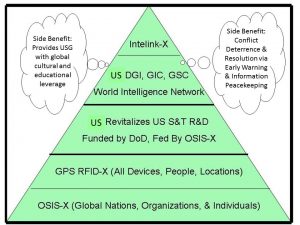
Figure 3: Strategic Depiction of Ten-Year Development Plan for Global Intelligence System
General Al Gray, testifying to Congress in the 1990’s, explained why he was the only Service chief to place both communications and intelligence under the same flag officer. He said:
“Communications without intelligence is noise; intelligence without communications is irrelevant.”
Writing in Forbes ASAP in August 1998, Peter Drucker, the dean of American business innovation, said (here we paraphrase a much longer commentary):
We’ve spent 50 years on the T in IT, now it is time we spent 50 years on the I in IT.
The printing press started the industrial era. The Internet started the information era. Team N-X, in the service of America and of the U.S. Government, is prepared to start the new era of global collective intelligence—a new, safe, intelligent network for profitable information-sharing that is directly responsive to the Defense Science Board studies on Strategic Communications (July 2004) and Transitions to and from Hostilities (December 2004).
N-X has identified funding needed over two years, to refine and scale up the capabilities listed in Annex E, following the milestones and objectives listed on the next page. N-X’s commitment to creating a global Open Source Business Unit is consistent with both classified and unclassified government needs for improved access, with one big difference: it is open to all possible contributors of raw foreign language information in all media forms.
This vision is so bold and so far-reaching that we provide here a summary of the implementation plan for the first 100 days and for the two-year investment period. Team N-X knows who to hire to execute this plan, and will meet this schedule with a collection of world-class “brand name” individuals. What we build will be the new, safe, intelligent information-sharing network for the world, one that is in the service of legitimate governments while helpful to all participating individuals and organizations including non-governmental organizations active in stabilization and reconstruction operations.
First 100 Days
Day 1: Publicize the Commitment, Announce Mission and Goals
Days 2-10: Meet with Constituencies, Establish Consensus Among Stakeholders
Days 11-20 Hire Key People at Premium Scales, Avoid Re-Locations—Global Virtual Team
Days 21-30 Establish OSINT Academy, OSINT Help Desk, and Translation Web
Days 31-40 Establish Information Technology Skunkworks for IC, DoD, UN, and World Bank
Days 41-50 Establish Web-Based Federated OSINT Requirements (Tasking Request) System
Days 51-60 Establish Web-Based Federated Collection Management (Tasking Order) System
Days 61-70 Establish Web-Based Federated Data and Production Management System
Days 71-80 Finalize Personnel, Facilities, Equipment, Funding, and Focus of Global Effort
Days 81-90 Test-Drive the Commercial Open Source Agency (COSA)
Days 91-99 Adjust
Day 100 Open for Business
Operational Objectives for the First Two Years (1 October 2005 to 1 October 2007)
Consistent with the internal investment schedule on page 45, and leveraging all contracts that can be won in the areas of information operations, information-sharing, global multi-media open source information acquisitiion and exploitation (including geospatial information), and foreign language translation and multi-cultural analytic services, Team N-X will:
- Create a globally accessible OSINT training program that combines residential, mobile, and web-based distance learning (this is distinct from and complements the USG to USG training)
- Create a globally accessible OSINT Help Desk staffed by “super-searchers” able to leverage both classified and unclassified databases in all languages and formats.
- Create a globally accessible Translation Web where human translators and experts can be tested, joined, and tasked for near-real-time translation and analysis services, including 911 services.
- Establish a focused acquisition, digitization, translation, and analysis of Chinese historical documents relevant to U.S. national security and U.S. national economic competitiveness.
- Create an architecture for sharing unclassified information among the Combatant Commanders, DoD agencies and intelligence centers, the USG, and United Nations as well as the World Bank.
- Join as many academic institutions (free) and corporations (fee) to OSIS-X as possible.
- Create a living directory of the top 100 published experts, and the top 100 unpublished experts, across all topics relevant to U.S. national security and national competitiveness.
- Create the Texas Early Warning Center to pioneer data mining advances helpful to homeland security and the prevention and resolution of conflict in every clime and place.
- Create a showcase Corporate Warning Network based in New York City (Harlem).
- Subsidize a DoD examination of residual capability in abandoned satellites that can be used to deliver free Digital Marshall Plan services across Africa and South America.
- Create a Strategic Information Operations Decision Support Center in Northern Virginia.
- Subsidize the Security Affairs Support Association (SASA) in developing executive seminars in information-sharing and intellectual property management—then create the University of the Republic as a fee-based means of fostering information-sharing across organizational boundaries.
Concluding this Executive Summary, here is an advance view of the Conclusion to this paper.
Our mission is to obtain universal access, in all languages, 24/7, at the sub-state level, to provide legal, ethical, overt decision support, and to dramatically improve the ability of all-source intelligence to provide secret decision support. Open Source Intelligence (OSINT) is a means to an end, not the end itself.
We have seven goals:
- To provide tailored decision support to defense and homeland security policy makers, defense acquisition managers, defense operators, and defense intelligence professionals.
- To nurture, embrace, and integrate information from the seven tribes of intelligence of all countries, so as to enable universal coverage of every country, in every language, 24/7, down to the neighborhood, tribe, and gang level.
- To create a global network of people—both U.S. citizens and foreign nationals—who are nothing less than “first string” professionals in the business of finding, getting, buying, and exploiting all forms of information in all languages, mediums, and domains. We will establish an OSINT Academy to teach and certify open source information collection, processing, and analysis skills at three levels: beginner, intermediate, and advanced. As individuals are trained, their contact information will be entered into a global directory with varying levels of visibility.
- To create a leap-ahead Global Information Architecture (GIG) that fully integrates Application-Oriented Networking Systems (AONS), semantic web and synthetic information architecture, Extensible Mark-up Language (XML), Really Simple Syndication (RSS), and a suite of open source software tools such as the Defense Advanced Research Projects Agency (DARPA) has tested (STRONG ANGEL) to enable all government and non-government parties to share information securely and effectively. We will implement this through a skunk works in the National Capitol Area (NCA), and an Open Source Information System – External (OSIS-X) open to all seven tribes in all countries.
- To create a global tasking (requirements) process and system that is open to, and nurtures, Multi-National, Multi-Agency, Multi-Disciplinary, and Multi-Domain Information-sharing (M4 IS).
- To create a global collection planning process that optimizes the amount of free information entering OSIS-X that is immediately importable to Intelink on the high side; we do this by incentivizing partner nations within each theater of operations, and by providing selective free access to OSIS-X as a platform for information-sharing among universities, NGOs, and others.
- To create a global processing, exploitation, and dissemination system that optimizes the amount of relevant unclassified information and tailored unclassified decision support that can be provided to each of our stake-holding constituencies within defense and homeland security.
We will have three priorities: first, filling in the gaps that are not now covered by secret sources and methods; second, providing “good enough” support to those elements of defense and homeland security that do not get sufficient substantive intelligence support now; and third, helping transform defense and homeland security in all their aspects by dramatically improving decision support.
N-X and its partners are prepared to deliver a 21st Century global information monitoring network and related decision support whose cost is shared by multiple governments and corporations, while providing at least a double order of magnitude increase in useful information available to DoD in near-real-time, in all languages, with applied analytics embedded in the network.
Executive Summary for the Director of National Intelligence. 1
Our Strategic Concept of Operations. 12
Appreciating the Magnitude of the Challenge. 12
Linking Foreign Open Source and Domestic “Bottom Up” Collection. 13
Creating the Open Source Information System – External (OSIS-X). 13
Information Collaboration Center (ICC) as a Generic Capability. 14
Creating Regional Multinational Information-sharing Centers & Networks. 15
Preparing for Global Stabilization & Reconstruction Operations. 15
Harnessing the Seven Tribes Through Coalition Military Networks. 16
Putting the I Into DIME (Diplomatic, Information, Military, Economic). 16
Open Source Software for Global Access to OSIS-X.. 17
Global Multi-Lingual, Multi-Media Information Acquisition. 18
Machine and Human Translation Services. 19
Deep Web Data Mining & Global Research Assistant 20
Multilingual Machine Extraction, Distillation, and Prioritization Technologies. 20
Generic Open Source Information Processing Service—Silobreaker. 20
Babylon Enterprise Title and Phrase Translator. 20
Generic Multi-Lingual Translation Service—Sehda S-Minds. 21
Foreign Indigenous Personnel Under Cover Support Plans. 21
US-Based Native-Fluency Personnel Under Cover Support Plans. 22
US Citizens with Near-Native Fluency Overseas. 22
US Citizens with Clearances Including Reserves and Use of Reserve Centers. 22
US Citizens with Clearances on Site. 22
Analytic & Decision-Support Services. 22
Statistical Analysis & Pattern or Trend Detection. 23
Precision Strategic Communication. 24
Tactical Hand-Held Communications, Computing, Information-Sharing, and Intelligence. 25
Illustration of Our Foreign Language Exploitation Cycle. 25
Our Larger Technical Approach. 27
ANNEX A: Real-World Language Matrix—Strategic Effectiveness. 30
ANNEX B: Terrorist, Insurgent, & Opposition Websites. 33
ANNEX C: Our Analytic Frames of Reference. 34
ANNEX D: Geospatially-Oriented Visualization. 36
Google, Deep Web Technologies, and MindTel, LLC.. 39
Global Intelligence Partnership. 40
Statistical Analysis & Pattern-Trend Detection. 40
PRNEWSWIRE Source Analysis & Precision Access to Influentials. 41
ANNEX F: Our Campaign Plan. 43
The Problem
The Strategic Problem
At the strategic level, and directly related to a half-century of focus on a handful of hard targets considered to be military threats, the United States of America finds itself with a military optimized for force-on-force confrontations between nation-states, and a national intelligence community optimized for stealing secrets through technical means, with an extremely narrow range of focus and almost no flexibility. The bulk of the money for intelligence is invested in technical collection rather than in Tasking, Processing, Exploitation, and Dissemination (TPED). 99% of the funding is focused on secret collection rather than open source information acquisition and exploitation. Emerging threats and non-state actors are best understood by achieving USDI Dr. Stephen Cambone’s vision of universal coverage, 24/7, in all languages, using open sources of information. At the same time, the Department of Defense lacks adequate personnel with language skills relevant to most of the complex emergencies and conflict zones where U.S. forces are engaged.
“Much of the needed information and knowledge can be found in unclassified sources, [but] the pursuit, exploration, and exploitation of open sources have taken a back seat to learning secrets. While we in no way denigrate the importance of the latter, we ask the [Secretary of Defense] to instruct [the Defense Open Source Council] to establish a vital and active effort focused on using open sources to provide information on cultures, infrastructure, genealogy, religions, economics, politics, and the like in regions, areas, and states deemed ripe and important.”
Defense Science Board 2004 Summer Study on Transitions to and from Hostilities
(Undersecretary of Defense for Acquisition, Technology, and Logistics, December 2004).
“DoD does not have an effective language oversight program. There is no systematic requirements determination process. There is no comprehenisve and accurate database of DoD personnel with language skills. … What we [must be] concerned with is … anticipating tomorrow’s requirements.”
Defense Science Board 2004 Summer Study on Transitions to and from Hostilities
(Undersecretary of Defense for Acquisition, Technology, and Logistics, December 2004).
“[T]he need for exploiting open source material is greater now than ever before…since the spread of information technology is immune to many traditional clandestine methods of intelligence collection…open source materials may provide the critical and perhaps the only window into activities that threaten the United States.”
Report to the President of the United States (Commission on the Intelligence Capabilities of the United States Regarding Weapons of Mass Destruction, 2005)
The Operational Problem
At the operational level, inter-agency collaboration within the U.S. Government, federal-state-county collaboration among the three levels of homeland governance, and multinational inter-agency collaboration within any given regional theater of operations, is severely constrained, almost to the point of complete ineffectiveness, by decades of investment in unilateral classified communication systems to which others—including elements of the federal government not traditionally engaged in national security affairs, and U.S. law enforcement at the state and local levels—cannot be granted access. The problem is exacerbated in relation to the transition to and from hostilities, where the Defense Science Board has determined that information-sharing with non-governmental organizations is absolutely essential to both campaign planning for military operations, and the execution of post-hostilities stabilization & reconstruction operations. The problems evident in our own homeland security information environment are dramatically compounded when we are seeking to access and exploit foreign information.
“Today there is no single agency or computer network that integrates all [national] security information [worldwide]…instead, must of the information exists in disparate databases scattered among federal, state, and local entities. In many cases these computer systems cannot share information—either ‘horizontally’ (across the same level of government) or ‘vertically’ (between federal, state, and local governments. Databases used for law enforcement, immigration, intelligence, and public health surveillance have not been connected in ways that allow us to recognize information gaps or redundancies.”
The National Strategy for Homeland Security (The White House, 2004)
“The U.S. government cannot meet its own obligations to the American people to prevent the entry of terrorists without a major effort to collaborate with other governments. We should do more to exchange terrorist informatin with trusted allies…”
Information-sharing for Homeland Security: A Brief Overview (CRS, 10 January 2005)
The Tactical Problem
At the tactical level, two problems persist, one from the past and one newly recognized. The continuing problem is associated with the disconnect between classified national systems that cannot see under bridges, within neighborhoods, and into hearts and minds; and the distinct but related problem of delivering useful fused intelligence to the front lines—to the those fighting to achieve objectives in the last mile. The newly recognized problem, with the proliferation of coalition allies, non-governmental organizations (NGO), private military contractors (PMC), religious organizations, and increasingly self-organized citizens groups, is that of establishing effective means of both sharing unclassified information when it makes sense to do so, and of establishing a shared view of the battlefield, be it diplomatic, informational, military, or economic.
The Technical Problem
Available information in 33+ languages and over five dialects of Arabic has exploded. Not only has print media information exploded, but African, Arabian, and Asian radio and television have exploded, and are often the only mediums available to illiterate individuals comprising a breeding ground for terrorists and criminals. Our national systems—both technical and human—are unable to scale up or drill down to acquire, translate, and analyze all relevant open information. At the same time, much of what we know is buried in electronic mail and personal hard drives that are not normally indexed for search & retrieval by any enterprise-wide system, much less a network.
Tactically, there is a need for a leap ahead in both Personal Digital Assistant (PDA) technology, and in the exploitation of globally-distributed multi-media and multi-lingual information for specific localized needs.
Our Strategic Concept of Operations
Appreciating the Magnitude of the Challenge
The global information explosion and its logrithmatic increase cannot be understated. Below (Figure 4) is an illustration of where information quantities are headed. Information doubled this past two years, so we are now looking at 100 billion gigabytes or 100 exabytes, roughly equal to 2 trillion four-door filing cabinets full of documents. Within this complex, multi-media and multi-lingual environment, the noise to signal ratio will get tougher, and so also will the early warning, anomaly detection, and pattern recognition challenges.
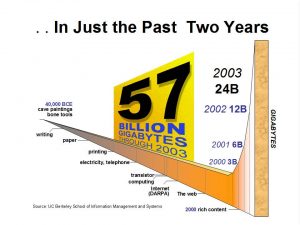
Figure 4: The Growth of Information Challenge
This is just the digital information—when one adds unpublished local or expert knowledge, locally-available hard copy or “gray literature,” and geospatial information as well as television and audio programming not available through the Internet, the magnitude of this challenge becomes apparent.
The critical ingredient in making sense of all of this information in near real-time is a scalable database architecture. Only the combination of IBM DB2 as the standard for private data collections, and Google Enterprise, the Googleplex of redundant data centers, and CISCO’s Application Oriented Networking System (AONS) can scale, now, to this challenge. Team N-X knows how to do this.
Linking Foreign Open Source and Domestic “Bottom Up” Collection
In our view, fully half the “dots” needed to prevent the next 9-11 will come from county-level observations by individual citizens and cops on the beat. Right now these dots have no place to go. At the same time, many distinguished authorities including Mr. David Gergen and Senator David Boren, have observed that only the internationalization of U.S. education will produce the kind of citizen we need to be effective in the age of globalization. For this reason we believe that an external commercial open source information network can serve as a means of linking foreign open source information collection and sharing, with domestic information collection and sharing. Eventually we anticipate that this commercial network will be authorized for at least Secret and probably Top Secret sharing, just as Federal Express is authorized for the transmission of Secret deocuments today. Our strategy as outlined in this White Paper is consistent with Office of Management and Budget (OMB) interest in considering the maximum possible use of commercial providers for defense and homeland security open source intelligence collection and processing,
Creating the Open Source Information System – External (OSIS-X)
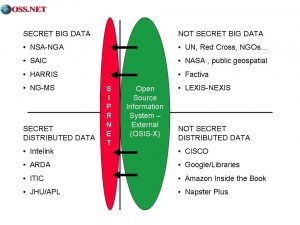
Figure 7: Open Source Information System – External (OSIS-X)
NOTE: Figures 5 & 6 do not appear in original.
Above (Figure 7) we have illustrated our understanding of the four quadrants of information that every COCOM and defense agency much be able to gain access to in order to plan and carry out their mission. Huge investments have been made in the two secret quadrants, and virtually no money at all has been spent on the two unclassified quadrants. It is our intention to deliberately fund OSIS-X as a commercial venture, taking care to migrate key personnel and standards from Intelink and OSIS, in order to create a universal global network that can not only receive and make sense of all unclassified information in all languages and all mediums, but can also be paid for—in cash and in kind—by all governments, corporations, and transnatinal organizations that choose to participate. We expect to sharply reduce the cost of global information to the government, in part by eliminating the need for multiple subscriptions to expensive commercial subscription services that tend to lack foreign language content, tend to be oriented toward business rather than defense, and have sources that can often be found for free or at lower cost elsewhere on the Internet or through direct arrangements with localized source aggregators; and in part by creating a global network that facilitates the harnessing of distributed global intelligence that easily can be ported to the high side of USG systems. We expect to migrate the proven standards, meta-tagging, and “look and feel” of the existing OSIS and Intelink networks, into the larger commercial and multinational arena, while providing for the application of leap ahead commercial technology, and new forms of security that will increase what can be shared, with whom, under appropriate dissemination controls with useful audit trails.
NOTE: Code M320 was created by Mr. Sean O’Keefe, Deputy Director of OMB at the time (2000-2001), acting on the advise of Mr. Don Gessaman, former Associate Deputy Director of OMB for National Security, who is a consultant to Team N-X with respect to optimizing our design and implementation of common solutions that can be migrated across the US Government and down to State & Local Governments.
Information Collaboration Center (ICC) as a Generic Capability
As the only defense vendor recognized by WIRED as a transformative innovator, we feel well-qualified to suggest that the Joint Inter-Agency Collaboration Center (JICC) initiative at SOCOM (Figure 8), can and should be used to create a generic Information Collaboration Center (ICC) capability that can be migrated quickly from its first implementation at SOCOM, to STRATCOM and then to other theaters (especially NORTHCOM for the homeland security implementation), and thereafter, to each State or Commonwealth (creating generic state-wide Community Intelligence Centers), and then outwards to the varied NGO agencies that have important global databases and subject-matter expertise relevant to proliferation, public perception, failed states, transnational crime, and so on. Our approach is consistent with the Defense Science Board studies on Strategic Communication (July 2004), and on Transitions to and from Hostilities (December 2004), whose key authors advise us as needed. Our integration of CISCO AONS, Google Enterprise, Silobreaker, and Anonymizer, will dramatically increase the amount of foreign and unclassified information available to every end-user, while providing anonymity.
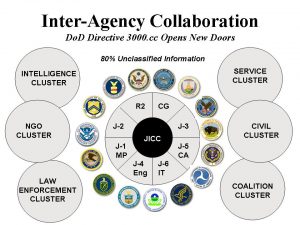
Figure 8: Providing a Common View with Shareable Open Source Information
Creating Regional Multinational Information-sharing Centers & Networks
Team N-X proposes to use our implementation of the OSIS-X, initially funded with our own IR&D resources, to offer free uploading to all regional COCOMs and their coalition allies so that the information can be indexed by Google, secured by CISCO, and easily harvested to the high side by Team N-X in collaboration with SOCOM. It is our hope that the generic ICC can be migrated to regional multi-national information centers that could eventually become multinational all-source intelligence and operations centers (Figure 9) where coalition military can attract unclassified information from across their respective countries, while allowing a multinational team led by the US to process and make sense of this information for regional early warning and coalition action purposes. Eventually they could add clandestine and technical collection of secrets to their capabilities.
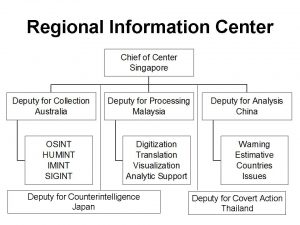
Figure 9: Concept for Harnessing Coalition Information Access & Services
Preparing for Global Stabilization & Reconstruction Operations
Our intellectual partner, OSS.Net, Inc., winner of the competitive open source support contract for SOCOM, has pioneered the “one button” push method for migrating open source information and intelligence upwards into NIPR and SIPR nets, by pre-installing Intelink meta-tags in all processed open source information. We believe that we can take Intelink standards and migrate these outwards via CISCO, Google, and Amazon, such that all information we capture and process for any client is immediately migratable to the high side with a “one button” push. At the same time, we can use the unclassified web-based information network that InfoSphere has installed in Sweden to provide a discreet international information-sharing platform where participating nations and organizations can upload information they wish to share, while we offer them unclassified information from US sources that have been approved for sharing (either generally or by individual subscription). This will substantially enhance the ability of the USG to share information relevant to stabilization & reconstruction operations with ad hoc partners that are not cleared for classified systems, and that do not possess communication and computing equipment unique to DoD and its varied networks. DARPA’s STRONG ANGEL open source software appears to be relevant, in conjunction with INTER-4 Tacticomps sanitised for general use, to rapidly establishing both threater-wide and tactical information-sharing and collaboration networks with shared low-cost information analytics and decision-support functionalites.
Harnessing the Seven Tribes Through Coalition Military Networks
Within each nation-state, the national government, the military, and the national law enforcement community represent just a fraction of the local knowledge and the direct access to varied open sources of multi-lingual and multi-media information. The other “tribes” include the business sector, the academic community, the NGOs and the local or regional media, and finally, self-organized citizen groups, labor unions, and religions. Our concept of operations provides for the facilitation of web-based voluntary but also accredited and authenticated participation by any and all elements, generally through and with the encouragement of their governments, whose employees will be afforded anonymous access across the system. The creation of such networks within each nation-state, and within each region, actually facilitates Strategic Communication in that the same network used to receive open source information can also be used to broadcast, in a carefully measured manner, specific messages to specific groups. Below (Figure 10) we illustrate these seven tribes, and also show our understanding of the degree to which each tribe can contribute unclassified information into a larger network—we can “go for the green” in the sense of going after free information from every “tribe” in every country.
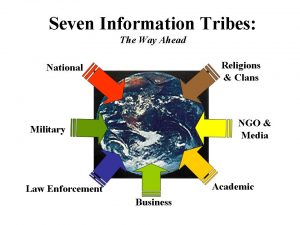
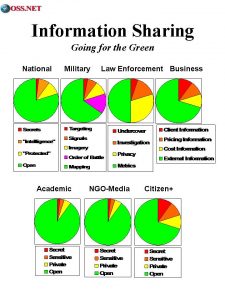
Figure 10: Seven Information Tribes and What They Can Share Free, Unclassified
Putting the I Into DIME (Diplomatic, Information, Military, Economic)
N-X proposes to fully address USG needs for Public Diplomacy, Strategic Communication and the Transition to and from Hostilities by creating a global open source acquisition, analytics, and technical information-sharing environment that will increase by an order of magnitude, and then a double order of magnitude, the near-real-time multi-lingual and multi-media information that can be delivered to USG elements in support of operational planning, acquisition and logistics management, and all-source intelligence targeting, evaluation, and integrated production. We will merge global acquisition, translation, statistical analysis, analytic services including historical and cultural analysis, and tailored dissemination in near-real-time. We are creating commercial concepts and doctrine for Information Operations that will be helpful to all elements of DoD as well as to homeland security.
Open Source Software for Global Access to OSIS-X
We share the commitment of the U.S. Government to finding “common solutions” migratable to the Department of Homeland Security (DHS) and down to the state and local level at the lowest possible cost—or even free—and we also share the vision of the Department of Defense (DoD) as it realizes its objective of achieving universal coverage 24/7 in all languages, at sub-state levels of granularity. These objectives cannot be achieved without the adoption of open source software as the primary means for enabling broad global and local access to OSIS-X, both to contribute information useful to national security and national competitiveness, and to share information down to the tactical and local levels, inclusive of NGOs and varied coalition government elements and private sector elements. We anticipate that an open source environment will also make it easier for governments within each Combatant Commander’s Area of Operations (AOR) to participate in OSIS-X, providing not only military information, but diplomatic and economic as well as environmental information.
Our Operational Approach
Global Multi-Lingual, Multi-Media Information Acquisition
FIND Free
The US government cannot readily put its hands on critical elements of information that are already acquired and stored across a variety of databases and desktop drives. We propose to establish a clearinghouse function that will store a copy of any relevant information acquired by any U.S. Government organization, or any foreign participant in our larger network (OSIS-X). Our capability will not only enable rapid reliable access to what is already known, but we will meta-tag it to Intelink standards and provide for the harvesting of new information and one-button push up to the high side every 15 minutes. Team N-X will validate all such data in terms of source bias, accuracy, and redundancy, and we will secure this data which will now have added value by virtue of having been validated and integrated into OSIS-X.
GET Free
Our OSINT element OSS.Net, Inc. wrote the NATO Open Source Intelligence Handbook, and has trained 7,500 officers from across 40 countries, during the past ten years. With our other partners we will establish an outreach program that offers free access to open source information that is approved for sharing, in return for online collaboration in rapidly identifying, obtaining, translating, and evaluating information that others can get for us, free. We believe that within any given theater leadership and communication and sharing can secure a 10-1 return. If we are willing to share what we have, we will elicit and obtain, free, ten times that amount of relevant information from coalition partners eager to be part of this larger unclassified information-sharing system.
Example from USSOUTHCOM: With the Command’s permission, OSS.Net has provided free copies of the Open Source Information Overview done daily, and of selected reports, to the Congressional Research Service, to the Canadian military intelligence branch responsible for South America, to the Organization of American States, and to the section heads for the Latin American Studies Association as well as varied subject matter experts around the world. The broadcast email to which the documents were attached was used, as appropriate, to advertise Command interest in any available information on a specific topic, such as Haiti, or Central American gangs. Invariably we would receive valuable immediate responses, as well as follow-up months later when new work was produced. Our methodology creates a community of interest that has a stake in contributing whenever and whatever they can.
BUY Low-Cost
While there are many companies, and some government organizations, that offer foreign media monitoring, open source intelligence, and unclassified analytic services, only one company, OSS.Net, Inc., has focused exclusively for sixteen years on “mapping” the foreign open source information environment, covering sources, softwares, and services.
On the next page (Figure 11) is a representative sample of the areas where we can obtain “best in class, best price” support:
| Open Sources | Open Software | Open Services |
| Current Awareness | Analysis | Online Search & Retrieval |
| Current Contents | Automated Abstracting | Media Monitoring |
| Directories of Experts | Automated Translation | Document Retrieval |
| Proceedings & Translations | Data Entry/Digitization | General Search & Retrieval |
| Commercial Online Databases | Data Mining & Visualization | Telephone Surveys |
| Threat & Risk Assessments | Data Retrieval | Private Investigation |
| Maps & Charts | Desktop Publishing | Strategic Research |
| Commercial Imagery | Insider/Outsider Electronic Security | Geospatial Analysis |
| Direct Observation/HUMINT | Internet Spiders & Crawling | S&T Acquisition Research |
| Original Information Creation | Video/Online Collaboration | Compliance Monitoring |
Figure 11: Frugal Effective Commercial Procurement of Open Source Information
N-X, OSS.Net, and InfoSphere have been very effective at identifying, testing, and teaming with niche small business that provide better services at lower costs than can be obtained by intermediate and larger networks of translators, analysts, and technicians. Annex A provides our strategic approach to integrating machine translation, online dictionaries, and different types of human translators and subject matter experts, and also lists a selection of specific companies around the world used by N-X. InfoSphere has its own proprietary list of over 300 ground collectors and translation specialists, while East View Cartographic operates a global geospatial acquisition network that can also obtain local “gray literature”—limited edition publications nor normally available to US Government personnel. As well, SOSi, a medium-sized business, is internationally known for its multi-lingual operational support capabilities.
TASK High-Cost
Finally, we have the classified disciplines, as well as directed overt collection from overt U.S. Government sources such as Embassy personnel. These should be a source of last resort because of their cost and the time lags in obtaining responsive integrated answers. N-X has thousands of experts across all of the classified disciplines, and we are prepared to help define collection requirements that are precise and focused, and reflect all that can be known first, and at lower cost, from free and for fee sources of information.
Machine and Human Translation Services
In addition, N-X has over the years established a strong internal cadre of US Citizens with both clearances and foreign language skills. N-X has also, over the years, identified, tested, and sub-contracted to a broad range of U.S. and foreign businesses—mostly very small businesses, that in the aggregate provide extremely reliable, accurate, responsive translations at the native fluency level, in 185 languages and dialects. In the aggregate they operate in 80 countries. Our other partners augment this network with hundreds of indigenous and domain expert translators, most operating under cover support plans.
With this internal foundation and existing trusted network of both cleared and uncleared human translators, N-X proposes to help DoD and DHS (including all county-level 911 systems) make significant advances in foreign language exploitation by integrating machine translation capabilities such as Babylon, CYBERTRANS and SYSTRAN with our innovative partner Sehda, whose S-Minds product is slated for inclusion in the Tacticomps being created for SOCOM by INTER-4.
Deep Web Data Mining & Global Research Assistant
We have found that it is possible to apply the power of grid computing to distributed information retrieval across very large quantities of data stored in geographically distributed heterogeneous content collections. We regard this pioneering but practical capability to be a precursor to our semantic web and synthetic information architecture planned for Phase II of OSIS-X. This capability, developed under Department of Energy auspices, and applicable to multimedia, multilingual medical databases, is a vital means of leaping ahead to the next level of inter-agency information sharing. Our addition of Deep Web Technologies to the team addresses ensures that this capability will be seamlessly integrated to our core technologies (CISCO, Google, IBM).
Multilingual Machine Extraction, Distillation, and Prioritization Technologies
Information available electronically has been growing at such a rate where it is impossible for people to identify the nature of the information content as it is made available, and even less feasible to absorb the actual information content. Synthesis and awareness of the content of information has now become a key technology for transforming large amounts of textual data to actionable information. Teragram multilingual linguistic technologies enable the distillation, fusion and personalized views of vast amounts information. Teragram Corporation provides multilingual natural language processing technologies that use the meaning of text to distill relevant information from vast amounts of data. By extracting of information from unstructured texts, categorizing it and fusing it, each user can be presented to a unique personalized view of the content. Teragram also provides linguistic dictionaries and resources can be embedded in other applications to perform more efficient searches and better organize information in more than 30 languages including European, Eastern European, Asian and Middle Eastern languages. Teragram's multilingual text mining technologies include entities and events extraction, automatic categorization and taxonomy management.
Generic Open Source Information Processing Service—Silobreaker
Our analytic team, including retired defense attaches annotating and drawing insights from translated materials, will be equipped with Silobreaker, the world’s best fully integrated open source information workbench. Silobreaker is our common low-cost (under $200 a seat per year) open source analysis toolkit, that is combined with instant anonymous access to tens of thousands of online sources in all domains of interest, maps, visualization and more. Silobreaker will also harvest the input of an estimated user base of a minimum of 200,000 users during 2006, and growing rapidly thereafter. Various hand-held devices including the Tacticomp from INTER-4 will be able to use templates to enter information including images into the Silobreaker database, and to pull “just enough, just in time” information, including maps and images, from Silobreaker.
Babylon Enterprise Title and Phrase Translator
The technology that exists in the market today is still not accurate enough to be able to understand the context or the nuances of full document in a foreign language. Our professional approach mixes “good enough” title and text translation from Babylon and now Babylon Enterprise (one click on any word or product code provides the user with information that may be stored in several corporate systems i.e. SAP, Oracle, Siebel, etc. hence it is a key application in assisting organizations in accessing foreign language knowledge that resides in different IT systems), with a generic multi-lingual translation software that can be trained up rapidly, and our global network of human translators, many of them with varying levels of U.S. clearance for special access.
Generic Multi-Lingual Translation Service—Sehda S-Minds
As a way to augment and ease the human-based translations, and as a replacement to the expensive-to-build-and-imperfect machine translation systems, Sehda has been working on learning algorithms that allows machine to learn how to learn the correct translation of a new language. This allows Sehda to develop translation for a new language pair very quickly that covers the basics of the language, and then apply its “Rapid Localization” algorithm to learn new vocabulary, phrases, and even idioms that are translated. After a few weeks of usage, this system can fully replace 80-90% of translations that the human does in any language. This effort is support by the Defense Advanced Research Projects Agency (DARPA).
This technology is also in use with Sehda's S-Minds technology that allows an English speaker to have limited conversations with a native of another language (e.g. Iraqi Arabic). The idea is that the S-Minds system while imperfect in the beginning, will improve over time to learn the local dialect while being used in the field. This conversational field-data can also be searched, filtered, and analyzed through the same mechanism that we use with all of the other data.
Sehda is planning to integrate the S-Minds technology into the Tacticomp hand-held devices that SOCOM is investing in for their field personnel. S-Minds is hardware independent and intended to be down-loadable to any Windows-based platform. Available for laptops now, this will—when the hand-held engineering has been done—allow generic hand-held devices that can be given to all relevant personnel in a complex emergency (e.g. NGO representatives) and through which they can both input information to OSIS-X, and draw information from OSIS-X.
Foreign Indigenous Personnel Under Cover Support Plans
Although we have team members specializing in foreign language translation capabilities, and plan to rely on them extensively, we are skilled at using Cover Support Plans and farming out bits and pieces of translation work through European, Asian, and Latin American intermediaries so that no one translator can perceive nor reveal the larger pattern of interest and concern that we are investigating on our client’s behalf. At this level of external complexity, there is no language we cannot exploit.
Working closely with SOCOM, we are fully familiar with legal constraints and legal permissions associated with open source information acquisition. In our experience too many Combatant Commands have allowed lawyers afraid of making a mistake, and analysts over-awed with secrecy, to interfere with Command access to publicly available information, including foreign language information, available on US citizens who may be agents of a foreign terrorist organization or a foreign power, and/or to foreign information from foreign sources.
We pioneered the concept of “black OSINT” (OSINT so good that you don’t want anyone to know we are getting it or the door will close), and we have also pioneered Cover Support Plans that permit us to task foreigners for open source information through various European and other entities who think they are supporting a commercial bank or insurance company carrying our an economic risk survey or some other similar requirement. We also split assignments, for example, in harvesting varied terrorist sites, we have different people doing different sites under different explanations, and no one sees the whole picture. Both Silobreaker and Anonymizer provide full anonymity, avoiding any osis.gov or the more obvious .mil flags that can cause visitors to be re-directed to vanilla sites.
US-Based Native-Fluency Personnel Under Cover Support Plans
N-X has determined that the best way to address the severe shortfalls in cleared U.S. Citizens with native fluency, is to create a network that leverages both foreign indigenous personnel under cover support plans, and US-based individuals not necessarily US citizens but with green cards, who by location and inclination are eager to earn supplemental income, and have both native-level fluency in the target language, and a solid understanding of American English including colloquialisms and turns of phrase helpful in translating concepts.
US Citizens with Near-Native Fluency Overseas
N-X believes that this web-based approach opens up an entirely new category of service, that of U.S. Citizens who live overseas and have near-native fluency. Such individuals can be immediately signed under commercial Non-Disclosure Agreements (NDA) and/or qualify rapidly for a SECRET clearance, and could constitute an “ace in the hole” for both surge requirements, and deep local knowledge including sensitivity to historical and cultural nuances.
US Citizens with Clearances Including Reserves and Use of Reserve Centers
For specified obscure languages, we will leverage selected members of the Reserve force, and also have a working relationship with a company that has pioneered use of Reserve Centers, with all of their secure access and communications, during the week when they are generally not occupied. Our Silobreaker toolkit, and online access to digitized materials, can also be placed in the homes of such individuals, who can support the requirement on a “not to interfere” basis with their full-time employment, while increasing their foreign area knowledge and augmenting their income.
US Citizens with Clearances on Site
N-X employs thousands of cleared U.S. Citizens. We will place whatever combination of cleared language-qualified analysts desired, either permanently on site or on an as-needed basis. We generally prefer to avoid imposing on the government any need for floor space or equipment. We propose to have all of our personnel located away from the Command but available for on-site work or face to face video-teleconferences, both secure and open, as needed.
Analytic & Decision-Support Services
Analytic Discipline
Team N-X does not do “cut and paste” analysis nor does it do data-base stuffing where quantity is provided instead of quality. Our team includes individuals that have established new military intelligence commands and managed very large military intelligence commands, and we have established a very high standard of analytical rigor. Annex C, Figures 16 and 17 on pages 33-34, provides a sense of two of our frameworks for developing comprehensive and coherent collection plans and exploitation plans. Our analysts know how to break down a problem, how to create and test hypotheses, and how to construct a research argument or finding.
Subject-Matter Experts
The very best and most current subject-matter experts are too expensive to hire on a full-time basis, and this is also counter-productive because they have become and remain world-class subject matter experts by immersing themselves in conferences, travel, correspondence, and other direct access opportunities that would not be available to a cleared US analyst tasked with providing continuous direct support to the client. Our approach to subject-matter expertise is similar to our approach to translation. We rely on the following categories of individuals:
- World-Class experts regardless of nationality hired briefly for specific topics
- World-Class experts who are US Citizens hired briefly for specific topics
- Retired US foreign service, military attaches, and business specialists on retainer
- Dedicated full-time analysts at the journeyman level
We use citation analysis (China has its own citation analysis directory, other countries are beginning to realize they must follow suit) to constantly refresh our roster, and we follow emerging graduate students of all nationalities, whose dissertations are readily available and often serve as indicators of emerging trends and developments.
Arnold IT follows social networking very carefully, and we are able to leverage such promising international networks as LinkedIn and Friendster to augment our professional citation analysis. When combined with a close working relationship with US Chambers of Commerce, NGOs, and other sources of direct observation, we can provide the best over-all monitoring possible, not only interpreting and exploiting that which is published in all forms, but actually creating new knowledge from experts who can “fill in the blanks” and provide contextual and cultural insights.
Statistical Analysis & Pattern or Trend Detection
Text mining is a specialized area of a field called data mining. In data mining the analyst examines large databases for patterns of interest. The type of data mining most appropriate for the Combatant Commanders is analyses that are capable of identifying signals predictive of action against U.S. targets. Typical “chatter” among Arab-speaking groups that occurs over the Internet is used as an indicator for possible terror attacks. When the chatter is high, US Intelligence analysts often issue a warning of a possible threat emerging. Chatter is data, but it is so unstructured that most analysts analyze volume of chatter and not possible information content. Observing the frequency a possibly meaningful signal is the level at which much intelligence analysis occurs contemporarily. Text mining allows a more sophisticated analysis similar to data mining.
Regular data mining and text mining differ in that text mining analyzes patterns that are extracted from natural language text (e.g., media sources) rather than from structured databases of encoded information designed for computer programs to process automatically. Media is text written for people to read, and it follows no uniform structure or explicit rules, and these vary considerably between languages. Computer programs cannot “read” text and understand it, and will not have such for the foreseeable future. However, natural language sentences can be analyzed using data mining tools called text mining by searching and cataloging strings, keywords and phrases, and contexts and syntax. Once this is done (i.e., data extraction), these processed data are amenable to analysis. Performing data extraction on the world’s media in multiple languages will create a data warehouse worthy of text mining for patterns that will be signals of interest to the intelligence community. Collection of these “processed data” from the data warehouse will result in a very large repository to guide future analysis of new information. After the machines have done the major effort of identifying signals, it is human work to transform the signals of interest into actionable information. Once the humans have done this several times, the machine can begin to perform some of these early decisions, under human supervision after data and text mining algorithms learn to simulate the human decisions. Ultimately, it is possible to develop expert systems to perform human tasks such as these, and allow the human to concentrate on refining the identification of highest priority signals.
Complementing and advancing this already excellent capability, Icosystem provides a flexible and cost-effective technology platform for exploring business issues and discovering or designing strategies that have significant potential impact. Icosystem's approach uses realistic models of complex business environments and evolutionary and distributed computational techniques to validate new business ventures or improve the performance of existing enterprises. One of its most intriguing applications to Information Operations is its ability to understand patterns of information in any language based not only on history but also on un-formulated, possible futures, thereby providing a forward-looking perspective rather than the traditional rearview mirror perspective —one of the most important over-looked aspects of information monitoring for early warning. Indeed, if future events were just variations of past events, traditional techniques might work. Icosystem’s approach can detect and foresee events that have never occurred or been observed before. Icosystem specializes in data mining for patterns that connect information with organizational or individual behavior, such that changes in information patterns can be related to predictive modeling of organization or individual behavior, e.g. ethnic or terrorist groups.
Icosystem also specializes in observing historical patterns and then looking for what should be there but is not—a very useful alternative approach to finding anomalous patterns.
Predictive Analysis
Everyone claims to do it. The reality, however, is that most “predictive analysis” is based on structured data (generally in English if not mathematical), is generally linear, even if logarithmic in nature, and fails to fully integrate expert brainstorming and alternative scenario development and testing. Remarkable advances over the last twenty years have changed the way we view the world, such that scientists have been able to capture the way nature solves problems and reproduce nature through techniques in computer systems. Genetic algorithms, neural networks, simulated annealing, evolutionary computation and swarm intelligence are just a few of the building blocks of intelligent computer life. Most IT firms have remained in the industrial era, and most clients have proven unable to act on the business intelligence produced for them. By combining computational advancements with intense exploitation of human experts to create replicable and diversifiable heuristics (“rules of thumb”), the leading practitioners are able to achieve a 40% increase in what normal intelligence processes achieve with industrial-era computing and normal all-source analysis. At the same time, by focusing on tailored “bottom-up” collection of raw oral information (e.g. Mosque sermons or “street talk”) and applying advanced linguistic and pattern analysis technologies, it is possible to model and anticipate shifting “tides” in human perception and related behavior across cultural divides. Team N-X has joined, in addition to its data mining innovators Icosystem and Texas A&M, MindTel, LLC, a pioneer in human linguistic and body language tracking also skilled at applying medical intelligence sources and methods to emerging threats such as terrorism and proliferation.
It merits comment that predictive analysis is much easier to achieve when a properly managed open source information endeavor has been put into place. Historical information, cultural information, and current information, when amassed and studied, reveal patterns and tendencies that can be quantified and visualized. Team N-X brings together both the comprehensive approach to open source collection in all relevant languages, reaching back into time for relevant data that provides new context, with the leap ahead predictive analysis tools and technologies needed to makes sense of quantities of multi-lingual multi-media data such as have never been routinely processed before.
Precision Strategic Communication
PRNEWSWIRE is in the process of transforming itself by creating lists specific to defense, foreign affairs, and other areas of interest. Using the team’s analytic frameworks, we plan to support PRNEWSWIRE in developing lists of influentials that allow for “by name” directed messages to be delivered via email, facsimile, voice, or postal hard-copy—in urgent cases, via Federal Express.
Following the priorities to be established by our clients, we will create a database of influentials, inclusive of values-based biographies and photographs less than three years old, and direct communications routes to them.
Below (Figure 12) are typical lists available in the US that can be created globally.
| Executive Leaders | Industry Leaders & Media | Advocacy Groups |
| Congressional Leaders | Chambers of Commerce | Environmental Leaders |
| Governors and Mayors | University Leaders | Medical Leaders |
| Military Leaders & Media | Labor Leaders | Student Leaders |
| Police Leaders & Media | Religious Leaders | Dissent Leaders |
Figure 12: Representative Influentials That Can Be Reached “By Name”
Beyond the existing directories of media in various languages, we plan to exploit both U.S. Chambers of Commerce, U.S. Embassy Information Attaches, and major commercial providers such as AP and Reuters to rapidly expand and enhance what is already available in the way of source bias directories. As a team member, we have joined PRNEWSWIRE, which is in the midst of a major transformation away from broadcasting press releases to major media outlets, and toward a global capability that will map paths to influentials in every country and every domain. With our help, PRNEWSWIRE will be able to create lists for every conceivable need and contingency—for example, all NGO heads of mission in Indonesia, or all religious leaders in Sri Lanka.
Our objective is to make possible both universal coverage of all relevant open source information 24/7, in all languages, but to make this a two way channel in which the USA message, the USG message, the DoD message, the Combatant Commander’s message, can reach specified individuals with precision. This will take time, but for specific needs we can create such lists within ten days.
Tactical Hand-Held Communications, Computing, Information-Sharing, and Intelligence
Leveraging the excellent work of INTER-4 and the Tacticomp hand-held computing device with locational awareness, we add the Silobreaker open source information reporting templates that permit anyone to upload information, including images, with geospatial and time-date stamps, and to receive tailored intelligence from the pyramid of information systems shown in Figure 3 on page 4, beginning at first with what will be available in the Open Source Information System – External (OSIS-X). Fully integrating Sehda’s S-Minds machine translation technology, and direct voice connectivity to our global network of human translators and cultural experts, this hand-held device will empower any person holding it with access to a global intelligence network capable of delivering just enough, just in time translations, cultural insights, and operational or logistics intelligence.
Illustration of Our Foreign Language Exploitation Cycle
Translation is not the challenge. The challenge is in having a mind-set and a network of real people all over the world who can put their hands on documents that are not online, enter them into the global web-based exploitation cycle, do online translation and annotation, and then, once the material is in English, effectively detect, integrate, and disseminate essential elements of information and product open source intelligence. Below (Figure 13, five slides) is an illustration of our global 24/7 foreign language exploitation cycle covering all necessary languages.
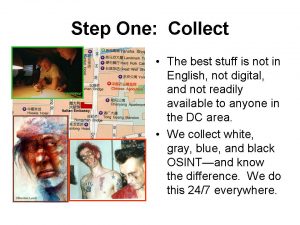
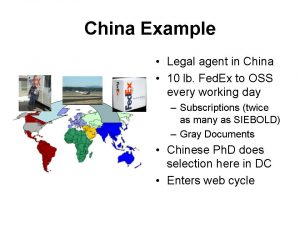
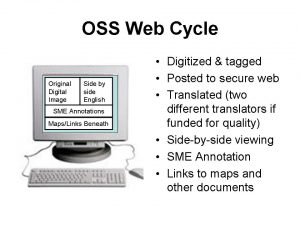
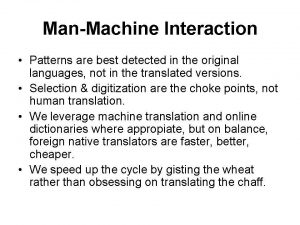
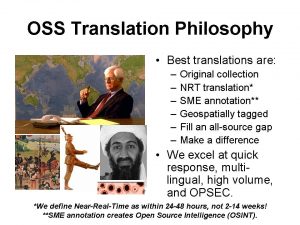
Figure 13: Our Foreign Language Exploitation Cycle
Why Aggregators Are Not Team Members. We would like to briefly explain why we do not have aggregators such as Factiva, DIALOG, and LEXIS-NEXIS on our team. They are commodities, and they are prone to offer what they have rather than what our clients need. The bulk of their information is English-language and either business or academic or Western news. Their gold licenses are too expensive. We can do better by going to original sources and tailoring a monitoring package to our client’s specific need. We do all this quickly, in days rather than weeks.
Our Larger Technical Approach
Over-all, N-X has concluded that OSINT is the key to addressing the information sharing challenges facing the DNI with respect to the fruits of all-source intelligence collection and analysis. We strive for nothing less than the creation of a “Manhattan Project” approach to OSINT that will allow the DNI to not only harvest all external OSINT securely, migrating from OSIS-X to OSIS, NIPR, and SIPR with one-button push and total security, but also to share sanitized secrets around the world, across national, state, local, private sector, and non-governmental boundaries, on a by-name, by-paragraph basis, with full audit. In the same way that FedEx is trusted to move secret documents today, we anticipate that OSIS-X, with commercial level security, will fully satisfy the requirements for information sharing with non-traditional partners including state and local authorities not normally eligible for clearances. Overall, OSINT can be used to foster a “leap ahead” culture across both the U.S. government and within the U.S. private sector. To that end, we list below (Figure 14) in one column the technical capabilities we have created or are creating via multiple contract vehicles as well as internal research & development (IR&D), and in the second column the enhanced or advanced “leap ahead” information technologies we are investigating in response to the pre-solicitation notice from SOCOM.
| Open Source Network Capabilities | Technical Capabilities (Enhanced) |
| Digital History
Cultural Idea Visualization Man-Machine Translation Network (24/7) NGO Data Warehouse and Network Virtual Intelligence Community — Daily Reports; Weekly Reports — Distance Learning — Expert Forums (Multi-Level Security) — Virtual Library; — Global Rolodex — Global Calendar — Virtual Budget — Virtual Requirements Coordination — Virtual Help Desk Generic Training Program Information-sharing Environment & Network Online Translation & Networking Services Regional Open Source Centers and Networks Regional Subject Matter Expertise Networks |
3D Graphics & Virtual Set Software Tools;
Automated Data Archive Technology; Blue Light Storage; Data Compression Capability Technology; Eliminate File Conversion; Embedded Metadata; Enhanced Archive Storage/Retrieval; Enhanced Editing Technology; Enhanced Efficiency for Broadcast Antennas. Enhanced Efficiency for Broadcast Transmitters; Improved Bandwidth Usage; Laser Technology For Enhanced Storage; Standardization Of Deployable Production & Electronic News Gathering Capability Technology; Standardized Formats; Video & Audio Processing Enhancement Technologies, Video & Audio Studio Modernization Technologies; Virtual Studio Technology |
Figure 14: Technical Elements of the Information Operations Campaign Plan
Above (Figure 14) lists specific technical areas in which we have both isolated competencies, and a plan for creating a global application-oriented network able to capture, understand, analyze, integrate, and dissemination mission-critical open sources of information in all languages. This system could also be migrated to the high side to deal with classified foreign language materials.
We will also provide two things not asked for but which we consider helpful: decision-support applying both CARVER (Critical, Access, Recuperability, Vulnerability, Effects, Recognition) and FAS (Feasible, Acceptable, Suitable) analytic constructs; and precision paths to influentials everywhere, via voice, email, facsimile, and/or hard-copy postal delivery, We are specifically committed to integrating the ideas of Capt Scott Philpott, on the Chief of Naval Operations (CNO) DEEP BLUE staff, for a strategic early warning and long-range assessment center of excellence.
Earlier (Figure 7, page 13) we outlined our plans for creating OSIS-X as the integrative network to whom all sources and all end-users could easily connect for unclassified information-sharing and analysis purposes. Our longer term objective is the creation of Intelink-X, enabling secure controlled multilateral sharing of Secret, Top Secret, and Codeword information and intelligence.
We will work closely with IBM and CISCO to ensure that our open source dots blend easily into the larger all-source environment, and we will strive to create generic processing (including machine translation and statistical analysis) and toolkit applications that can be rapidly migrated to the high side, empowering all end-users, not only intelligence analysts, but operators, acquisition managers, logisticians, and other supporting staff and subordinate command elements. The network is the computer now, and between CISCO AONS, Google Enterprise, Silobreaker, and IBM DB2, a very robust set of tools can be directly exploited within the network itself. (Figure 15).
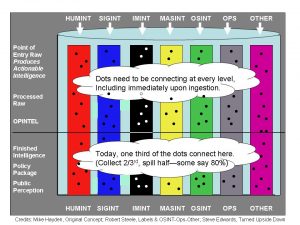
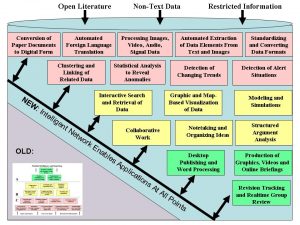
Figure 15: Connecting the Dots at Point of Entry, The Network Is the Computer
We have semantic web and synthetic information architecture under development, but these applications are not ready for global operational implementation at this time. In Phase II, already under development, we will implement these applications, and also add a global 911 service that will allow any individual to call in and receive both interactive secure real-time translation and subject-matter expert support, as well as secure loationally-aware cultural intelligence, and a global 119 service, that allows any individual to submit voice or image or data to localized intelligence centers and networks.
All of this is consistent with the information sharing and information visualization concepts being developed by the National Geospatial Agency, In-Q-Tel, and other elements of the IC. We can make OSINT, and OSIS-X, a very high-quality service of common concern that moves us forward.
Conclusion
Our mission is to obtain universal access, in all languages, 24/7, at the sub-state level, to provide legal, ethical, overt decision support, and to dramatically improve the ability of all-source intelligence to provide secret decision support. Open Source Intelligence (OSINT) is a means to an end, not the end itself.
We have seven goals:
- To provide tailored decision support to defense policy makers, defense acquisition managers, defense operators, and defense intelligence professionals.
- To nurture, embrace, and integrate information from the seven tribes of intelligence of all countries, so as to enable universal coverage of every country, in every language, 24/7, down to the neighborhood, tribe, and gang level.
- To create a global network of people—both U.S. citizens and foreign nationals—who are nothing less than “first string” professionals in the business of finding, getting, buying, and exploiting all forms of information in all languages, mediums, and domains. We will establish an OSINT Academy to teach and certify open source information collection, processing, and analysis skills at three levels: beginner, intermediate, and advanced. As individuals are trained, their information will be entered into a global directory with varying levels of visibility.
- To create a leap-ahead Global Information Architecture (GIG) that fully integrates Application-Oriented Networking Systems (AONS), semantic web and synthetic information architecture, Extensible Mark-up Language (XML), Really Simple Syndication (RSS), and a suite of open source software tools such as DARPA has tested to enable all government and non-government parties to share information effectively. We will implement this through a skunk works in the National Capitol Area (NCA), and an OSIS-X open to all seven tribes in all countries.
- To create a global tasking (requirements) process and system that is open to, and nurtures, Multi-National, Multi-Agency, Multi-Disciplinary, and Multi-Domain Information-sharing (M4 IS).
- To create a global collection planning process that optimizes the amount of free information entering OSIS-X and immediately importable to Intelink on the high side; we do this by incentivizing partner nations within each theater of operations, and by providing free access to OSIS-X as a platform for information-sharing.
- To create a global processing, exploitation, and dissemination system that optimizes the amount of relevant unclassified information and tailored unclassified decision support that can be provided to each of our stake-holding constituencies within defense.
We will have three priorities: first, filling in the gaps that are not now covered by secret sources and methods; second, providing “good enough” support to those elements of defense and homeland security that do not get substantive intelligence support now; and third, helping transform defense in all its aspects by dramatically improving decision support.
N-X and its partners are prepared to deliver a 21st Century global information monitoring network and related decision support whose cost is shared by multiple governments and corporations.
ANNEX A: Real-World Language Matrix—Strategic Effectiveness
ANNEX B: Terrorist, Insurgent, & Opposition Websites
Figure 17: Representative Numbers of Foreign Language Web Sites Meriting Monitoring
We applaud the Large Scale Internet Exploitation (LSIE) initiative of the Foreign Broadcast Monitoring Service (FBIS), and we will be bidding on that contract if it is competed. More to the point, we believe that OSIS-X will allow for all information obtained by all vendors at taxpayer expense, to be made available to accredited state and local as well as non-governmental officials, and to participating universities and corporations.
ANNEX A: Real-World Language Matrix—Strategic Effectiveness
ANNEX B: Terrorist, Insurgent, & Opposition Websites
ANNEX C: Our Analytic Frames of Reference
ANNEX D: Geospatially-Oriented Visualization
ANNEX E: Our Team Members
Complete Annexes with tables and graphics are in the document provided above.



